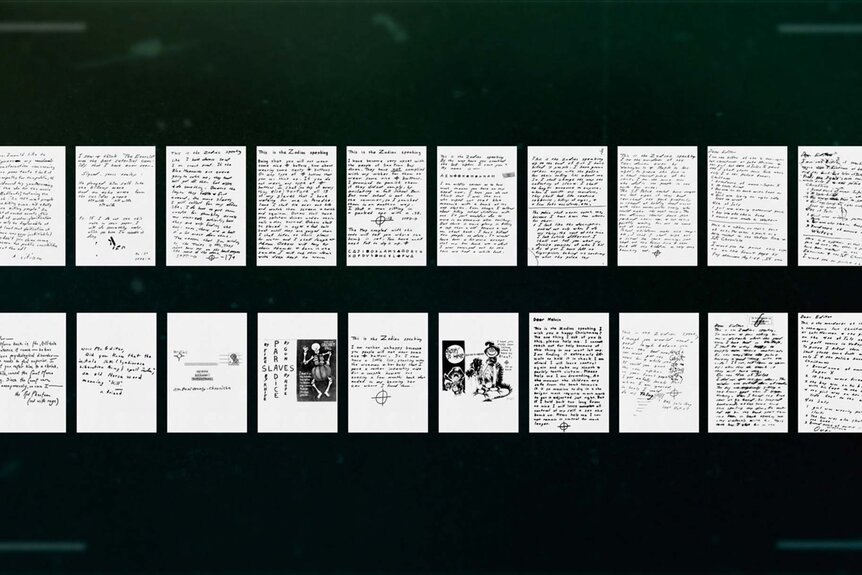Create a free profile to get unlimited access to exclusive videos, breaking news, sweepstakes, and more!
The Zodiac Killer Letters Were Analyzed By AI—Here Are the Results
Two experts in computational linguistics studied the letters using new technology.
In the late 1960s, residents of Northern California were terrorized by a masked serial killer who sent letters and ciphers to police which purportedly contained information that would lead to his arrest. But decades have passed and law enforcement has yet to catch the killer, who became known as the Zodiac Killer.
While multiple theories have been floated over the years as to the identity of the mystery killer, Professor Thomas Henry Horan is convinced that the Zodiac Killer eluded capture because he simply doesn't exist. He outlines this idea in the two-part documentary series The Myth of the Zodiac Killer, streaming now on Peacock.
Part of the evidence supporting Horan's hypothesis are the letters purportedly written by the Zodiac. Horan believes that the letters were penned by multiple individuals, adding to the mystery around the Zodiac's identity.
RELATED: How the Zodiac Killer Taunted Investigators with Letters and Ciphers
"The only so-called evidence that does link any of these murders together is these letters taking credit for the murders," Horan says in the series.
In an effort to prove that the letters were written by multiple people, Horan and filmmaker Andrew Nock approached Florian Cafiero and Jean-Baptiste Camps, two Frenchmen who are experts in computational linguistics and asked them to analyze all 35 letters using artificial intelligence.
Cafiero and Camps worked with the writing samples for nearly a month, with Cafiero describing the task as “by far, the most challenging that we've had to work on because there is so much," and adding that the writers seemingly tried to "deceive" the reader.
"We are very happy to get some, I hope, convincing results for some of the questions you asked," Cafiero continued.
So, what did they find? Well, through their analysis of the language alone — a.k.a. the "individual stylistic genome" — Camps and Cafiero found that the writer spoke in the style of early middle English, most commonly associated with the Shakespearean era.
Camps added that this was likely "intentional" and done to confuse the reader.
Secondly, the experts said that their analysis showed that there are "visible shifts in style throughout the letters," particularly before and after the murder of San Francisco cab driver Paul Stine, who is also the last confirmed Zodiac victim.
"What is striking is that what's changing is not the vocabulary, it's complexity and so on and so forth in the content words," Cafiero explained. "It's the complexity of the use of smaller words."
So, for the letters before Stine's murder, the use of the word "the" differs from that of the letters sent after his death, in which words like "her," "them," "like," "you," and "rather" are more commonly used. Cafiero explained, "There are so many more words that are being used after the Stine murder that it indicates a change in style."
Cafiero added that an individual's style of writing tends to remain the same throughout one's life, especially as an adult.
"The phenomena that we observe here are clear enough to raise doubts but we, of course, have to be cautious and reasonable about the interpretation of all this. For now, it's just a sketch but it's a sketch that gives a lot of insight when they're analyzed with other clues and in context of other people who know the case," Cafiero said.
While Camps said they couldn't draw a definite conclusion, he said, "There's clearly something deserving of deeper investigation.
That being said, Michael Butterfield, the writer of ZodiacKillerFacts.com, noted that the FBI has declared the letters as being "authentic."
To learn more about Horan and Nock's research, watch The Myth of the Zodiac Killer on Peacock.































